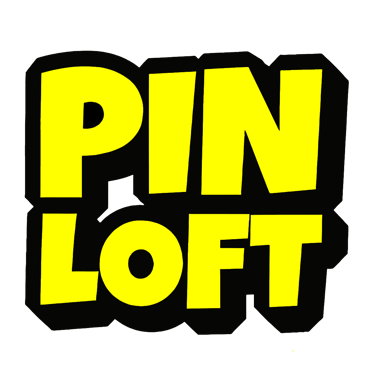Debunking the Myths: Common Misconceptions in Custom Enamel Pin Design and Manufacturing
Thinking of turning your art into a product? Discover the tools, tips, and industry insights you need to launch and scale a successful enamel pin business.
8/7/20254 min read


Understanding Enamel Pins: Basics and Types
Enamel pins have become a popular accessory for expressing personality, creativity, and interests. These small, decorative items—typically made with a metal base and filled with colored enamel—are admired for their vibrant colors, intricate designs, and wide versatility. Whether used to showcase hobbies, promote brands, or communicate personal messages, enamel pins appeal to a diverse audience ranging from collectors to entrepreneurs.
There are two main types of enamel pins: hard enamel and soft enamel.
Hard enamel pins are known for their smooth, polished surfaces. The enamel is layered and baked, then polished flat, resulting in a sleek, durable finish. These pins typically feature raised metal lines that provide a clean, defined look—ideal for long-term wear and professional aesthetics.
Soft enamel pins, on the other hand, have a textured surface where the enamel fills the recessed areas between raised metal lines. This creates a tactile, dimensional effect that many collectors find charming. While generally more affordable than hard enamel, soft enamel pins may be slightly more prone to wear over time.
Understanding the differences between these two types is key for anyone exploring pin design and production. Choosing the right style ensures your pins match their intended purpose—whether for fashion, marketing, or collecting.
Misconception 1: Enamel Pins Are Only for Collectors
While enamel pins are indeed beloved by collectors, their utility goes far beyond hobbyist circles. In reality, enamel pins have become powerful tools for marketing, branding, self-expression, and commemoration.
Businesses use custom pins to reinforce brand identity, showcase logos, and promote products at trade shows or events. They're affordable, portable, and memorable—a great way to connect with audiences.
Artists and creatives leverage enamel pins as both an art form and income stream. Selling pins allows them to translate unique illustrations or messages into tangible, wearable products.
Event organizers frequently use enamel pins as commemorative keepsakes for festivals, weddings, conferences, or reunions. Custom pins leave lasting impressions long after the event is over.
Enamel pins are not limited to collectors—they’re versatile items that resonate with many people for many reasons.
Misconception 2: Custom Enamel Pins Are Too Expensive to Produce
Many people assume custom enamel pins are cost-prohibitive. In truth, they can be quite affordable—especially with the right strategy.
Key factors that influence cost include:
Design complexity (more details or colors = higher cost)
Material choice (soft enamel is generally less expensive than hard enamel)
Order quantity (bulk orders significantly reduce cost per pin)
Many manufacturers offer volume discounts and budget-friendly options without sacrificing quality. You can also save money by:
Simplifying your design
Choosing fewer colors
Taking advantage of promotions or seasonal discounts
With thoughtful planning, custom enamel pins are accessible to individuals, artists, small businesses, and large organizations alike.
Misconception 3: You Need to Be an Artist to Design Pins
You don’t need to be a professional artist to create amazing enamel pins.
Great designs often start with simple ideas inspired by your passions, hobbies, or personal experiences. Whether it’s a clever quote, a favorite animal, or a symbolic image—your concept is what matters most.
Even if you can’t draw, you can:
Use beginner-friendly design tools like Canva or Procreate
Hire freelance designers or use your manufacturer’s in-house design team
Collaborate with artists who share your vision
Creativity comes in many forms. With the right support, anyone can design a pin that’s unique, meaningful, and market-ready.
Misconception 4: All Pin Manufacturers Offer the Same Quality
Not all pin manufacturers are created equal. The quality of your pins depends on:
Materials used (e.g., brass or iron for long-lasting durability)
Production techniques (e.g., die-striking, electroplating, or precision polishing)
Attention to detail in finishing and quality control
Low-cost manufacturers may cut corners with cheaper materials or inconsistent finishes, resulting in dull colors, peeling enamel, or tarnishing metal.
Always research a manufacturer’s:
Portfolio and past work
Customer reviews
Communication and production capabilities
Choosing a trusted manufacturer ensures your pins look professional, feel premium, and stand the test of time.
Misconception 5: Enamel Pins Are Just a Passing Trend
Some believe enamel pins are just another fashion fad—but their longevity proves otherwise.
Since their resurgence in the 2010s, enamel pins have cemented their place in fashion, pop culture, and branding. They’ve evolved into a timeless accessory embraced by collectors, designers, artists, and businesses.
What makes enamel pins so enduring?
Their adaptability to current trends and personal styles
Their customizability, which allows endless creativity
Their role as identity markers, giving people a way to express who they are
As long as people crave creative, wearable forms of expression, enamel pins will continue to thrive.
Best Practices for Creating Custom Enamel Pins
Designing and producing custom enamel pins is an exciting process. Here’s how to do it right:
1. Concept & Research
Start with a clear idea. Research trends, themes, and what your audience loves. Define the style, size, and colors early in the process.
2. Create Your Design
Sketch your concept or create a digital mockup. If needed, work with a designer or use tools like Adobe Illustrator. Focus on clarity and simplicity—tiny pins need bold, readable details.
3. Choose a Manufacturer
Evaluate potential partners based on quality, pricing, reviews, and communication. Ask for samples or a portfolio of previous work.
4. Communicate Specifications
Be clear about:
Pin size and shape
Enamel type (hard or soft)
Metal plating (gold, silver, black nickel, etc.)
Pantone colors
Backing (rubber clutch, locking pin, etc.)
5. Approve Samples
Before mass production, review a digital proof or sample. This is your chance to spot issues and make adjustments.
6. Promote and Sell
Use social media to build hype. Platforms like Instagram, TikTok, and Pinterest are ideal for showcasing your work. Launch your pins via:
Online shops (Etsy, Shopify)
Local events or pop-ups
Giveaways or influencer collabs
Custom enamel pins are more than products—they’re creative expressions, marketing tools, and collectibles all in one. By following these best practices, you'll be well on your way to making pins that resonate and sell.
Partners
Supporting creators with quality production and delivery.
Collaboration
About Us
Copyright © 2025 Raoin Co. All rights reserved.







